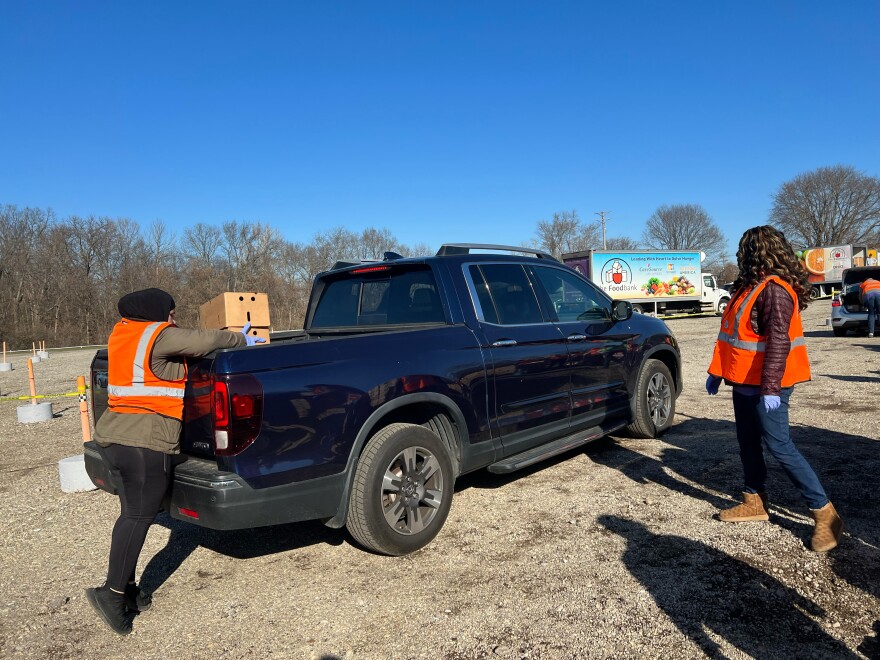The majority of people using Ohio’s network of Feeding America food banks are choosing between buying food or paying for essentials like utilities or medicine. That’s partly because of the looming high cost of food, according to a recent Ohio Association of Food Banks study.
The association surveyed over 2,000 people who've used the services of the state's network of food banks.
The study found that over three out of four Ohioans using food banks exhaust their SNAP benefits, previously known as food stamps, within the first two weeks of the month. Only 5% of the surveyed SNAP participants said their benefits lasted the full month.
It also showed well over half of food bank participants have had to chose between paying for food or other expenses like gas, utilities, medicine or housing.
Throughout the pandemic, people enrolled in SNAP received an average of $90 more per month. Those temporary benefits ended in February 2023. Mike Stanley, who lives in Northeast Ohio, is one of 1.5 million Ohioans who lost those extra SNAP benefits. The loss removed about $126 million worth of SNAP dollars that were available to Ohioans, according to the association.
Stanley, who uses a wheelchair and can’t easily work, used to get $200 a month. Now, he’s back to receiving $35 a month. He said he could stretch that out before, but high prices make it nearly impossible now.
“I could go to the local store, buy a loaf of bread, wasn’t that much, buy some lunch meat. Buy enough to eat for a couple of days. Probably spent less than $10. Do that now and my food stamps don't even cover it.”
Stanley also mentioned that during the period when he received additional SNAP emergency allotments, he could buy healthier foods and not worry, although now he said he and many of his neighbors who also participate in SNAP are having to make tough choices.
“It was nice not to have to worry about what I am going to do for food for the next month,” Stanley said. “Now [we’re asking ourselves], "Do we pay bills? Do we pay our rent or do we eat?'”
Amber Wright, the development and marketing coordinator at the Dayton Foodbank, said high food prices are significantly driving up the number of people the nonprofit sees.
“What's most noteworthy is how many new families we're seeing. In last week's drive thru, about 71 of those families had never before sought food assistance with us or anyone in our network off 116 partner agencies across Montgomery, Greene and Preble counties.” Wright said.
Earlier in June, the food bank had planned to serve about 400 families at its usual mini food distribution at the Salem Mall in Dayton. The nonprofit ended up seeing over 1,000 families, according to Wright.
“High food prices are really impacting everybody right now. And this all has a ripple effect. It doesn't just affect the people in our lines, it affects the entire community,” Wright said. “SNAP not only feeds the people that are participating in the program, but it also generates economic activity.”
Anti-hunger advocates are urging Ohio's policymakers to strengthen social safety net programs and increase funding for the state's network of food banks.
“Ohio’s food banks are already at our breaking point, facing overwhelming demand amid record inflation and high prices. We are calling on our state and federal leaders to make a firm, demonstrated commitment to ensure that no Ohioan goes hungry.” Lisa Hamler-Fugitt, the executive director for the Ohio Association of Foodbanks said.
Alejandro Figueroa is a corps member with Report for America, a national service program that places journalists into local newsrooms. Support for WYSO's reporting on food and food insecurity in the Miami Valley comes from the CareSource Foundation.
Copyright 2023 WYSO.



